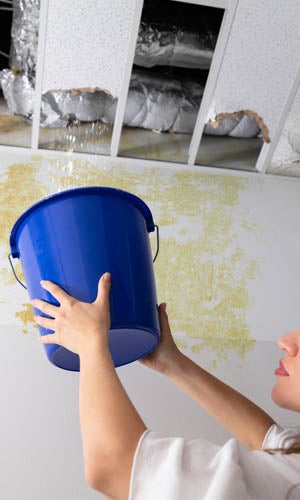Overview To Water Leakage Detection In Your Home
Overview To Water Leakage Detection In Your Home
Blog Article
Are you currently on the lookout for tips around Locating water leaks?

The minute you discover a leakage, calling your plumber for repair work is the most effective service. Some small water leakages might not be noticeable. If you can not find it with your nude eyes, here are some hacks that help.
Early discovery of dripping water lines can mitigate a potential catastrophe. Besides saving you money, it will reduce the stress as well as irritation.
Examine Water Intake
If you detect unexpected changes, despite your intake being the same, it implies that you have leaks in your plumbing system. A sudden spike in your costs indicates a fast-moving leak.
Meanwhile, a constant increase on a monthly basis, despite the very same behaviors, reveals you have a slow leakage that's also slowly escalating. Call a plumber to completely check your property, especially if you really feel a warm location on your flooring with piping underneath.
Analyze the situation and inspect
Homeowners must make it a practice to examine under the sink counters and also inside cabinets for any type of bad odor or mold and mildew development. These two warnings indicate a leak so punctual attention is required. Doing routine examinations, also bi-annually, can conserve you from a major problem.
Examine the Water Meter
Examining it is a guaranteed means that helps you uncover leakages. If it moves, that indicates a fast-moving leakage. This suggests you might have a sluggish leakage that can also be below ground.
Asses Outside Lines
Don't fail to remember to examine your outdoor water lines as well. Needs to water permeate out of the connection, you have a loose rubber gasket. One little leakage can throw away tons of water as well as spike your water bill.
Do a Food Coloring Test
When it comes to water consumption, 30% comes from commodes. If the color somehow infiltrates your dish during that time without flushing, there's a leak between the storage tank as well as dish.
A lot more importantly, if you recognize your home is already old, maintain a watchful eye on your heaters, tubes, pipes etc. Check for discolorations and also deteriorating as many pipelines and home appliances have a life expectancy. They will likewise normally wear away as a result of tear and use. Don't wait for it to rise if you think dripping water lines in your plumbing system. Call an expert plumber today so you don't end up with an awful mess in your home.
The moment you locate a leak, calling your plumber for repairs is the best solution. Some little water leaks may not be visible. Checking it is a surefire means that helps you find leaks. One tiny leakage can squander heaps of water and surge your water costs.
If you think leaking water lines in your plumbing system, don't wait for it to rise.
How to Know If Your Home Has a Hidden Leak
Water Meter Reveals Inexplicable Water Usage
If you’d like to test whether or not there’s a leak somewhere in your home, you can do this using your water meter. Here is how to conduct the test:
Don’t use any water in your home for at least 30 minutes; this also means not turning on faucets or water-using appliances.
Go outside, and check your water meter for activity.
If your water meter shows that there was activity, even though no one was using any water, this proves that there is a leak in your home.Visible Mold or Mildew Growth
Leaks behind walls create moist, dark environments that allow mold and mildew to grow and thrive. Eventually, you might see mold growth forming on the wall closest to a hidden leak.
If mold is growing in an area that receives a high amount of moisture, such as a bathroom, it may simply be an indication that better ventilation is needed. However, if you see mold growth on a wall or the ceiling in an area where you would not expect, you probably have a hidden leak.
Musty, Mildew Odor
Sometimes you might not be able to see the mold or mildew that is growing as a result of a leak. However, the smell can give the problem away just as easily. If you catch a whiff of something musty, there’s a good chance that old water is collecting somewhere in your home that you can’t see.
Stained/Warped Walls, Ceilings, or Floors
When your home soaks up water, a variety of red flags can become visible, including ceiling stains, bubbling drywall, warped walls, and sagging floors. While these issues can be caused by excess humidity, they can also be signs that a pipe or plumbing connection has started leaking behind your walls.
Inexplicably High Water Bill
After a while, you get a general sense for what your water bill should be. If you own a pool or sprinkler system, your bill will tend to be higher during summer. However, if you receive a water bill that seems especially high, and you can’t figure out what caused it, then you may have a hidden leak somewhere that’s increasing your bill.
https://www.plumbingjoint.com/blog/2019/july/how-to-know-if-your-home-has-a-hidden-leak/

We were made aware of that write-up about Locating water leaks through someone on a different web address. In case you liked our post please don't forget to share it. Thank-you for taking the time to read it.
Report this page